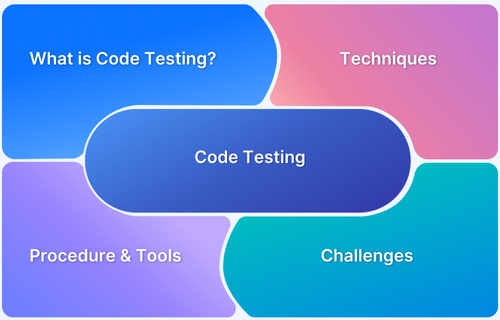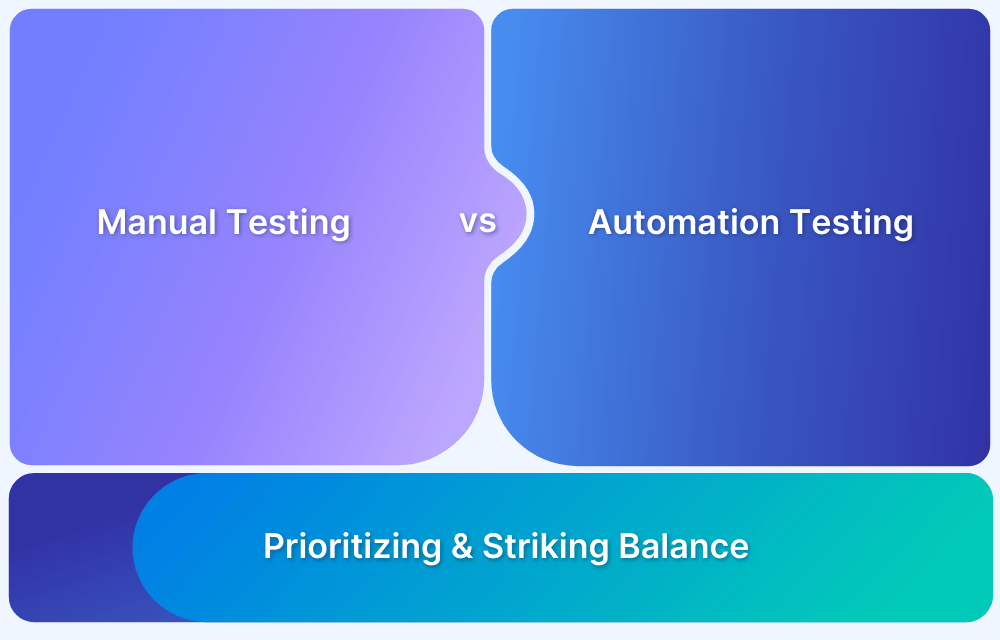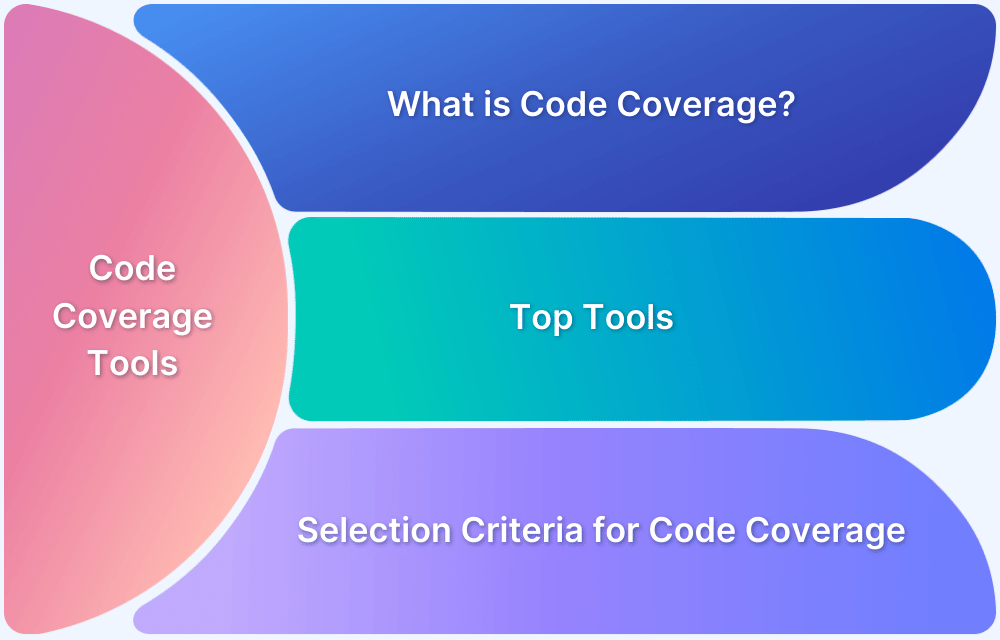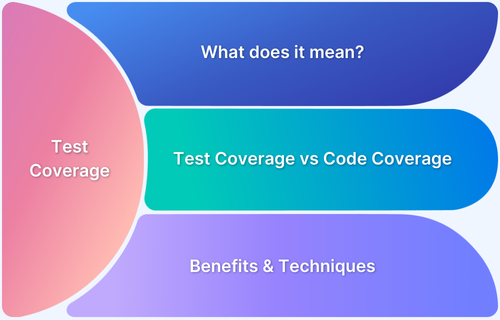Code-based testing ensures software quality by identifying bugs and vulnerabilities before deployment, reducing errors in production, and improving user satisfaction.
Overview
What is Code Testing?
Code testing is the process of verifying and validating software to ensure it functions correctly, meets requirements, and is free of defects.
Code Testing Techniques:
- Unit Tests
- Integration/System Tests
- Functional Tests
- Regression Tests
- Acceptance Tests
Code Testing Tools:
- Jasmine
- Mocha
- Chai
- QUnit
- Sinon
- Karma
- Selenium
- WebdriverIO
- Nightwatch
- PhantomCSS
- PhantomFlow
- BrowserStack
This article explains what Code Based Testing is, its importance, challenges, best practices, and how to perform code testing with an example.
What is Code Testing?
Code testing is the process of evaluating a software application or program to ensure it functions correctly, meets specified requirements, and is free of defects.
It involves systematically executing the code under controlled conditions, verifying expected outputs, and identifying any errors, inconsistencies, or vulnerabilities.
Testing can be performed manually or through automated tools and includes different types such as unit testing, integration testing, functional testing, and system testing. By identifying bugs early in the development cycle, code testing improves software quality, reliability, security, and user experience while reducing the risk of failures in production.
Code Testing Methodologies
Code testing embraces various methodologies that go beyond any single approach.
1. Manual Testing: Manual testing involves human interaction with the system under test. Developers or end users manually test the code by performing various tasks, providing inputs, and verifying the outputs. This can be done by developers testing their own code or involving a sample of end users to test different functionalities and report any issues they encounter.
While manual testing is quick to start with, it has some drawbacks. Human testers are prone to errors, and for large-scale projects, it can be expensive to conduct extensive manual testing. However, manual testing provides the flexibility to thoroughly examine the software, and it can be effective in discovering usability issues and obtaining user feedback.
2. Automated Testing: To reduce costs and increase efficiency, automated testing uses scripts or tools to automate the testing process. Test scripts are created with predefined test cases and expected outcomes. These scripts simulate user interactions and verify the correctness of the software’s responses. In the event of a response deviating from the anticipated outcome, an error message or warning is triggered.
While creating automated test scripts requires more upfront time and resources, once established, they can be run multiple times throughout the software’s lifecycle. As the software evolves, the test scripts can be updated to accommodate new functionalities without the need for extensive manual retesting.
Also Read: Manual Testing vs Automation Testing
3. Testing Documentation: Structured documentation is crucial in code-based testing to ensure clarity, facilitate understanding, and identify gaps in the testing process. Stakeholders, including non-technical individuals, may require insight into the testing procedures.
Documentation can take various forms, such as plain text files elucidating the program’s functionality, test objectives, or contextual comments embedded within the test code. The output produced by the test script should be well-written, allowing easy identification of errors and the specific areas where the program is not functioning as intended.
4. Repeat Testing and Code Coverage: Even if automated test suites pass all tests, it is important to account for potential regressions caused by changes in the code. Repeating the test script whenever a new feature is ready for deployment helps ensure that existing functionality is not inadvertently affected.
The terms code coverage and test coverage are relevant in testing. Code coverage refers to the percentage of code that is executed during testing, while test coverage measures the percentage of required features or specifications that are tested. Achieving 100% code coverage ensures that all code paths have been tested, reducing the chances of untested scenarios causing issues.
Also Read: Top 15 Code Coverage Tools
Code Testing Techniques
Coding testing techniques play a crucial role in ensuring the success of any software development project. These techniques involve a variety of testing approaches, spanning from evaluating small code components to assessing the overall functionality of the application. Let’s dive into the core five components of coding testing techniques:
- Unit Tests: Unit testing is an integral part of the software development process. It involves testing small units or components of code individually to ensure their proper operation. This testing can be performed manually, but it is often automated in Agile and DevOps projects. Unit tests help identify issues in specific code units and ensure they function as intended.
- Integration/System Tests: Integration testing focuses on combining individual software modules and testing them as a group. It occurs after unit testing and before functional testing. This testing stage verifies the interactions and compatibility between different modules, ensuring they work together seamlessly.
- Functional Tests: Functional testing is conducted after integration testing. It involves testing the software to ensure that it meets all specified business requirements and functions correctly. The goal is to validate that the software has all the necessary features and capabilities for end users to utilize it without encountering any issues.
- Regression Tests: Regression testing is performed to verify that software, which may have undergone changes such as enhancements, bug fixes, or compliance updates, still performs correctly. It ensures that the modifications made to the software do not introduce new issues or break existing functionality. Regression tests help maintain the overall quality and stability of the software across different releases.
Read More: How to run Regression Testing in Agile Teams
- Acceptance Tests: Acceptance testing is carried out to evaluate the system’s acceptability from the end user’s perspective. The primary objective is to assess whether the software complies with the business requirements and is suitable for production deployment. Acceptance tests validate that the software meets the expectations and needs of the end users.
By incorporating these coding testing techniques into the software development lifecycle, teams can identify and rectify issues at different levels, ensuring a higher quality and more reliable software product.
How to perform Code Testing with Example
Code testing involves systematically verifying a software program to ensure it functions correctly. It can be performed manually or using automated tools. The basic steps include:
- Understanding Requirements: Define what the software should do.
- Writing Test Cases: Create structured test scenarios to validate functionality.
- Executing Tests: Run tests manually or using automated tools.
- Analyzing Results: Compare actual outcomes with expected results.
- Fixing Bugs: Report, debug, and re-test to confirm fixes.
- Regression Testing: Ensure new changes don’t break existing features.
Here is an example code for code testing.
[TestMethod] public void IsPalindrome_ForPalindromeString_ReturnsTrue() { //In the Arrange phase: //Create and set up the system under test. //The system under test can be a method, a single object, or a graph of //connected objects. //It is acceptable to have an empty Arrange phase. //For example, when testing a static method, the system under test //already exists in a static form, requiring no explicit initialization. PalindromeDetector detector = new PalindromeDetector(); //In the Act phase: //Invoke a method to interact with the system under test. //Collect the returned result to verify its correctness. //Check for expected side effects if the method doesn't return anything. bool isPalindrome = detector.IsPalindrome("kayak"); //In the Assert phase: //Validate the behavior of the method to determine the test's success or //failure. //Compare the actual output with the expected outcome. //Ensure that the method behaves consistently with the defined //expectations. Assert.IsTrue(isPalindrome); }
This unit test verifies whether the IsPalindrome method correctly identifies a palindrome. The IsPalindrome function reverses the input string and checks if it matches the original (ignoring case). The test instantiates PalindromeDetector, calls IsPalindrome(“kayak”), and asserts that the result is true. If the function is implemented correctly, the test passes; otherwise, it fails.
Also Read: Top Unit Testing Frameworks in 2023
Must-have code testing tools
Here is a curated list of code testing tools that have been compiled to cater to various requirements:
- Jasmine: A behavior-driven development framework, independent of other JavaScript frameworks, with a clean syntax for testing JavaScript code.
- Mocha: A feature-rich JavaScript test framework that runs on Node.js and in browsers, providing flexible reporting and exception mapping.
- Chai: A powerful assertion library for Node.js and browsers, perfectly complementing any JavaScript testing framework.
- QUnit: A widely used JavaScript unit testing framework capable of testing any generic JavaScript code, employed by jQuery projects.
- Sinon: A standalone library offering test spies, stubs, and mocks for JavaScript, compatible with any unit testing framework.
- Karma: A test runner suitable for different browsers, providing detailed test results and aiding in cross-browser testing.
- Selenium: An automation tool primarily used for web application testing and web-based administrative tasks.
- WebdriverIO: Simplifies browser and mobile application control with concise code, managing the Selenium session efficiently.
- Nightwatch: A user-friendly Node.js-based testing solution for browser-based apps, utilizing the powerful W3C WebDriver API.
- PhantomCSS: Compares screenshots captured by Casper.js to baseline images, facilitating visual regression testing.
- PhantomFlow: Enables UI testing with decision trees, offering a unique approach based on code-described user flows.
- BrowserStack: Enables comprehensive code testing across real devices and browsers, ensuring functional accuracy and consistency through continuous integration and feedback.
Remember to choose tools that align with your project requirements and empower you to write comprehensive tests that validate the functionality and reliability of your code.
Challenges in Code Testing
Here are some common challenges in code testing:
Challenges in Code Testing:
- Lack of Test Coverage
- Test Data Management
- Test Environment Setup
- Test Case Maintenance
- Dealing with Complex Dependencies
- Handling Legacy Code
- Test Automation
- Time and Resource Constraints
- Debugging and Issue Isolation
- Continuous Integration and Deployment
- Lack of Test Coverage: Ensuring comprehensive test coverage across all code paths and scenarios can be challenging, especially in complex systems. Identifying and testing all possible combinations and edge cases can be time-consuming and resource-intensive.
- Test Data Management: Managing test data, including creating realistic and diverse data sets, can be a challenge. Test data needs to cover a wide range of scenarios, including valid and invalid inputs, boundary values, and various data types.
- Test Environment Setup: Setting up and maintaining test environments that closely resemble the production environment can be difficult. Issues with configuration, dependencies, and compatibility between different components can impact the accuracy and reliability of test results.
- Test Case Maintenance: As code evolves and changes, test cases need to be updated and maintained. This can be challenging, especially when there are numerous test cases and frequent code changes. Ensuring test cases remain relevant and effective is crucial.
- Dealing with Complex Dependencies: In large-scale applications with intricate dependencies, testing becomes challenging. External systems, databases, APIs, and third-party services may introduce complexities that require special consideration and coordination for effective testing.
- Handling Legacy Code: Testing legacy code can be problematic due to outdated frameworks, lack of documentation, and tight coupling. Understanding and testing legacy systems with limited or no unit tests can be time-consuming and require specialized techniques.
- Test Automation: Implementing and maintaining test automation frameworks and tools can present challenges. Developing robust and maintainable automated test suites requires expertise in scripting, handling dynamic elements, and managing test data.
- Time and Resource Constraints: Limited timeframes and resources can hinder thorough testing. Prioritizing testing efforts, optimizing test execution, and making trade-offs become necessary to meet project deadlines.
- Debugging and Issue Isolation: Identifying the root cause of failures and isolating issues in complex systems can be time-consuming. Troubleshooting and debugging require a deep understanding of the codebase and thorough analysis of test results.
- Continuous Integration and Deployment: Integrating code testing into continuous integration and deployment pipelines can be challenging. Ensuring fast and reliable feedback loops, managing test environments, and coordinating with development teams require effective collaboration and tooling.
Remember that these challenges can vary depending on the specific project, technology stack, and organizational context. Addressing these challenges often requires a combination of technical expertise, collaboration, and adopting best practices in code testing.
Best Practices for Code Testing
Here are 10 impactful best practices for code testing:
- Start Early: Initiate testing from the early stages of development to identify and address issues promptly. Embrace shift-left testing to catch bugs early on and improve code quality.
- Define Clear Objectives: Set precise testing objectives and prioritize critical functionalities. This focus ensures comprehensive testing of essential areas.
- Plan Strategically: Create a well-structured testing plan, prioritizing activities based on risks and dependencies. Strategic planning optimizes resource allocation and maximizes test coverage.
- Embrace Test Automation: Leverage automation tools like Selenium to streamline repetitive testing tasks. Automating tests saves time, improves efficiency, and enables faster feedback on code changes.
- Adopt Test-Driven Development (TDD): Practice writing test cases before coding to ensure code adheres to specifications. TDD serves as executable documentation and promotes code quality.
- Isolate for Precision: Practice isolated testing by separating code from external dependencies. Use mocking or stubbing techniques to simulate dependencies’ behavior.
- Challenge Boundaries: Pay attention to boundary conditions and test edge cases rigorously. Thoroughly validate inputs, values, and scenarios at the limits of expected behavior.
- Prioritize Regression Testing: Perform regular regression testing to ensure code changes or bug fixes don’t introduce new problems. Maintain a comprehensive suite of regression tests.
- Foster Collaboration: Encourage collaboration between developers and testers through open communication, knowledge sharing sessions, and code reviews. Collaborative efforts enhance test scenarios and align code implementation with testing efforts.
- Achieve Continuous Testing: Integrate testing into your CI/CD pipeline for continuous testing. Automate tests as part of the build process. Continuous testing reduces defects and ensures thorough validation of code changes.
By following these impactful best practices and leveraging automation, collaboration, and continuous testing, you can elevate your code testing approach and deliver high-quality software products.
Boost your Agile testing with BrowserStack Automate and App Automate. Ensure code quality, cover all scenarios, streamline communication, and achieve exceptional results. Experience seamless testing on 3500+ browsers and real mobile devices. Elevate your testing game with BrowserStack for an unmatched user experience.
Conclusion
Code testing is a critical practice that ensures the integrity and quality of software code. By implementing a robust testing plan, developers can identify and address issues early on, minimizing the chances of errors in production code. Thorough testing enhances customer satisfaction, prevents revenue loss, and instills confidence in both the development team and end users.
With the adoption of best practices, such as early testing, clear objectives, strategic planning, test automation, and collaboration, developers can optimize their code testing approach and deliver high-quality software products. Remember, code testing is an ongoing process that requires continuous improvement and adaptation to ensure software reliability and success.





